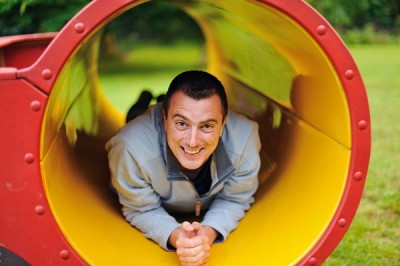Its an old joke in the camera world: amongst the many modes your camera has are ‘A’ and ‘P’ – they stand for ‘Amateur’ and ‘Professional’ :o)
Well of course not really. In fact quite the opposite. ‘P’ is for Program Mode in which the camera makes all the decisions about everything and therefore gives the photographer no control. At least in ‘A’ mode you get to choose your Aperture (‘A’ is for Aperture Priority BTW) so you control how much of your scene is in focus.
Teachers and Pro Photographers generally scorn Program Mode and I understand why. Many courses will start you out with the most basic camera in Manual mode because it really is the best way to learn how photography works (because if you don’t get it right you don’t get a photograph).
This definitely works (although it can be frustrating for people used to instant success in a modern world). I ‘grew up’ on manual cameras (mostly because as a student I couldn’t afford anything else).
But I don’t agree with the ‘you have to shoot Manual – always’ mantra that you pick up on a lot of the Fora. Once you have the skills and experience (which you get from shooting manual) then your camera is a very functional tool with features to help you in many varied circumstances.
Moreover, these days they are very good at what they do: why not use the auto features if you can control them and predict what they’re going to do for you?
I use: autofocus 99% of the time – but I decide which focus point to use; auto ISO most of the time (it is an entirely predictable algorithm); Auto exposure – in Aperture Priority Mode – with a mix of metering patterns and manual compensation when it doesn’t quite give me what I want; and auto white balance sometimes does the job of tricky mixed lighting (and it can easily be changed afterwards).
Using these tools gives me a very high percentage of in-focus, well exposed images so that I can concentrate on my subject.
So, as usual, I think the right answer is ‘never say never’. If you understand how a tool works, you can control it, you know its limitations and you know what to do when it isn’t working for you, why not use it?
The understanding is the key – and that is where the hard work lies.
This holiday, my daughter was sent on a mission by her mother: get a picture of Dad on holiday for once. Prove that he was here. She took this up with some enthusiasm and between Mum’s camera phone, and her iPod she did well.
One evening I took the D700 to the playground to get some overall pics of the place in which we were staying for the holiday album. Daughter Number One asked to use my camera for her Mission. I set it to ‘Professional’ mode, auto iso, auto focus, auto focus point selection, auto white balance. I hung my big, expensive camera around her 9 year old neck and I told her which button to press.
Amongst them is a shot which I might well have taken myself:



Joe Bussink legendary wedding photographer uses P most of the time…the key is knowing ‘how’ to use it.
Hi Mark, I read that about Joe on the DWF (accompanied by the usual long thread about people missing the point) and I think I had that in mind when I saw what my daughter with Program Mode.
I think of all the functions in a camera as tools – some are more advanced than others – and you need to learn how to use them before they can be useful.
Knowing a tool is about understanding its strengths and weaknesses and being able to predict what it is going to do for you in any given circumstance.
Once its behavior is predictable, you can make appropriate choices about when and where to use that tool. The right choice will make what you want to do easier (or just possible).
Of course you also need to know what you want to achieve in the first place.
I took a look at your site BTW and I like your work. If you’re ever in Cork give me a shout.